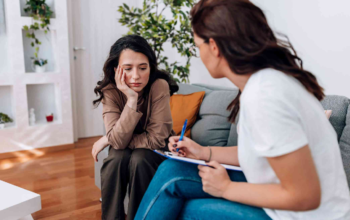What Happens During Online Therapy?
These days, most people have a smartphone or other mobile device. Computers with webcams are usually found in most homes and spending large chunks of the day behind a screen is commonplace. It makes sense then that therapy sessions have moved with the times and are now offered both on- and offline. So how does an online therapy session differ from a traditional face to face session?
During online therapy, the therapist will be in one location and the patient in another. They will communicate with each other via the internet. Sometimes, a therapist will request that the initial consultation be done face to face to give both parties the opportunity to meet and to get to know one another a little bit better. For some, this makes the transition to online therapy easier. Other times, the therapist will send the patient a video where they will make an introduction and tell the patient a bit about themselves and what the sessions will be like.
Online therapy can come in the form of a live video chat or a text-based chat. The form the session takes will depend on the comfort levels of the patient as well as the way in which the therapist prefers to work.
Does Online Therapy Work?
There are challenges associated with online therapy, particularly those which take place over text chat. This is because a big part of traditional face to face therapy sessions involves the therapist observing the patient. They typically look at the patient’s body language or will assess the tone of voice to get an insight into their overall wellbeing. This may be slightly easier with a video chat, but with text-based sessions this part of the process is completely removed.
Nevertheless, online therapy can be remarkably successful when done right. Moreover, it has many benefits for certain individuals. For example, it makes therapy much more accessible to those who do not have the ability to travel to the session. This could be because the person does not drive and does not have easy access to public transport.
It also means that more people are willing to access therapy because they don’t have to worry about being seen. There remains a lot of stigma attached to counseling and therapy, which can prevent some from accessing the help they need. The ability to have online sessions means that therapy can help many more people.
Those struggling with mental health conditions such as social anxiety will find it easier to reach out to a therapist if they can do it online. It is easier for some individuals to take part in sessions when they do not have to travel to a specific location. They can schedule it into their lunch break, for example. And many people feel more comfortable sharing their feelings if they are doing it online, rather than in person.
To conclude, online therapy may be something that was once unheard of, but it has made counseling and therapy sessions much more accessible for some, especially those who might have been embarrassed to visit a therapist’s office.




